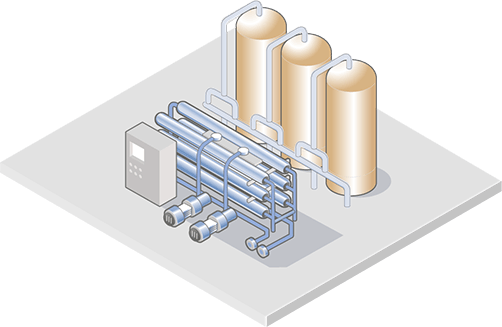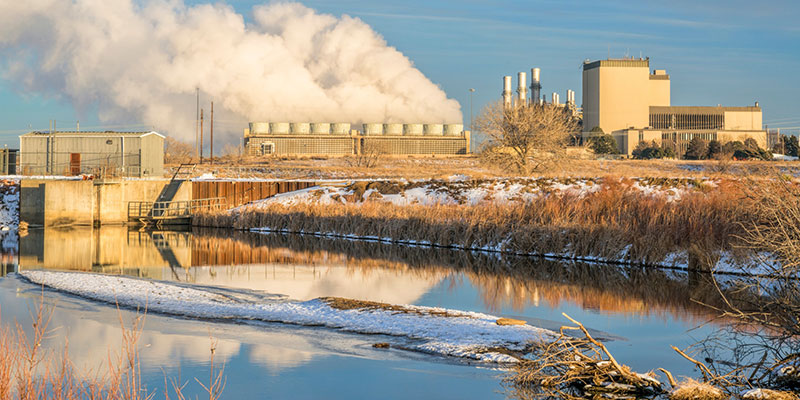Industrial Waste Water Treatment-- Advanced Solutions for Cleaner Effluents
Industrial Waste Water Treatment-- Advanced Solutions for Cleaner Effluents
Blog Article
Challenges and Solutions in Hazardous Waste Water Treatment
The therapy of commercial wastewater presents a diverse selection of challenges, varying from stringent regulative conformity to the intricacies of cost administration and technical limitations. The variability in waste make-up further complicates the efficiency of conventional therapy approaches, often causing risen operational expenditures. Emerging services such as sophisticated oxidation procedures and ingenious funding designs reveal pledge in resolving these issues. As industries grapple with the need for lasting techniques, the inquiry continues to be: what methods will inevitably cause an equilibrium in between compliance, cost-efficiency, and environmental responsibility?
Regulatory Conformity Challenges
How can commercial facilities navigate the complex landscape of regulatory conformity in wastewater treatment? The governing structure governing wastewater monitoring is diverse, typically varying by territory and sort of industry. Facilities needs to comply with government, state, and regional guidelines that dictate effluent top quality requirements, discharge limits, and tracking requirements. Failing to comply can result in serious penalties, consisting of fines and functional shutdowns.
To properly take care of these compliance difficulties, facilities ought to implement robust tracking and reporting systems that guarantee real-time data collection and analysis. Normal audits and risk analyses can identify prospective conformity voids, permitting positive adjustments in treatment procedures. Staff member training programs focusing on regulative expertise and ideal practices are crucial to promote a society of conformity within the company.
Furthermore, engaging with regulative agencies can provide useful insights and clear up unclear guidelines. Facilities might likewise gain from talking to ecological experts that specialize in wastewater treatment conformity, guaranteeing that they remain abreast of evolving guidelines. By embracing these techniques, commercial facilities can not just meet compliance needs but likewise boost their functional efficiency and ecological stewardship.
Price and Economic Barriers
Browsing governing compliance in wastewater treatment usually provides considerable economic challenges for industrial facilities. The expenses linked with implementing needed therapy modern technologies, maintaining compliance with rigid laws, and taking care of operational expenditures can be discouraging. Many organizations face high preliminary capital investment for the building and construction or upgrading of wastewater treatment plants, which may strain budgets, particularly for little and medium-sized ventures.
Additionally, ongoing operational costs, including maintenance, chemical, and labor inputs, contribute to the financial burden. The unpredictability of varying power rates and the possible demand for extra investments to satisfy developing policies intensify these economic pressures. In most cases, the lack of economic motivations or support from government bodies makes it even more challenging for organizations to warrant financial investments in sophisticated treatment systems.
In addition, the financial stability of wastewater therapy options is typically questioned, particularly for sectors with tight profit margins. It is crucial for commercial facilities to explore cost-effective approaches, such as taking on cutting-edge financing alternatives, involving in partnerships, and leveraging arising technologies that can assist mitigate these financial obstacles while making sure compliance with ecological standards.

Technological Limitations
Numerous technical limitations hinder the effectiveness of commercial wastewater therapy processes. One significant obstacle is the insufficiency of existing treatment modern technologies to address intricate impurities. Lots of traditional methods, such as turned on sludge and chemical precipitation, fight with the removal of arising contaminants, including drugs and microplastics. This limitation often causes the discharge of inadequately treated water, which can have destructive ecological impacts.
Furthermore, the scalability of therapy innovations poses a difficulty. While some advanced techniques, like membrane purification or sophisticated oxidation, reveal guarantee in regulated environments, their application on a bigger scale can be practically tough and prohibitively costly. Upkeep and operational intricacies further make complex the fostering of these systems, especially for smaller sectors with limited technical expertise.
The combination of real-time surveillance technologies likewise stays not enough in many treatment centers. Without reliable tracking systems, drivers can not sufficiently analyze therapy efficiency or discover prospective failings, bring about inconsistent effluent top quality. Addressing these technological constraints via study and growth, along with financial investment in cutting-edge remedies, is vital for enhancing the effectiveness of industrial wastewater therapy and guaranteeing governing conformity.
Variability in Waste Make-up
In the realm of commercial wastewater therapy, the variability in waste structure offers a formidable difficulty. Industries produce wastewater with diverse features, affected by variables such as manufacturing processes, resources, and functional methods. This heterogeneity complicates the treatment procedure, as traditional systems commonly have a hard time to effectively resolve the vast array of pollutants existing.
For circumstances, wastewater from food processing might consist of high levels of natural matter, while effluents from chemical manufacturing might consist of dangerous materials and hefty metals. This variance demands versatile treatment strategies to guarantee conformity with environmental regulations and secure public health. Additionally, changes in waste composition can happen over time, affected by changes in production timetables, maintenance tasks, or the introduction of brand-new products.

Ingenious Therapy Solutions
Ingenious therapy options are important for resolving the complexities of commercial wastewater management. Typical techniques frequently drop short in successfully getting rid of a vast array of pollutants, specifically in facilities with varied effluent streams. Recent developments concentrate on integrating innovative modern technologies to improve therapy performance and sustainability.
One promising technique is making use of sophisticated oxidation procedures (AOPs), which utilize powerful oxidants to break down natural toxins. AOPs, including photocatalysis and ozonation, can substantially minimize poisonous substances and improve effluent high quality. In addition, membrane layer bioreactor (MBR) technology has acquired grip, incorporating biological treatment with membrane filtering, leading to click for info high-quality effluent and decreased footprint.
One more ingenious option is the execution of source recuperation systems. Techniques like anaerobic digestion not published here only deal with wastewater however likewise create biogas, which can be harnessed as a renewable resource source. The adoption of artificial knowledge and equipment understanding designs can enhance treatment processes by predicting variants in wastewater structure, thus enhancing operational performance.
These cutting-edge options not just address regulative compliance yet likewise promote environmental sustainability, leading the way for a more effective and durable commercial ecological community.
Final Thought
To conclude, addressing the obstacles of industrial wastewater therapy needs a multifaceted technique that integrates governing compliance, price administration, and technological innovations. Ingenious services, such as innovative oxidation processes and membrane layer bioreactor innovation, deal pathways to boost treatment performance. Additionally, real-time monitoring systems and joint engagement with governing agencies can promote lasting practices while minimizing economic stress. A dedication to continual improvement in therapy methodologies will eventually add to the effective administration of commercial wastewater and environmental management.
The treatment of commercial wastewater offers a complex array of challenges, ranging from stringent regulatory compliance to the complexities of expense monitoring and technical constraints. Industrial Waste Water Treatment.Navigating regulative compliance in wastewater treatment typically provides considerable monetary obstacles for commercial Find Out More centers. Resolving these technical constraints with research study and advancement, alongside investment in cutting-edge solutions, is essential for enhancing the efficacy of commercial wastewater therapy and making sure regulatory compliance
Wastewater therapy centers should invest in durable surveillance systems and versatile treatment technologies qualified of fitting varying influent features.In verdict, addressing the difficulties of industrial wastewater treatment calls for a diverse method that integrates governing compliance, cost monitoring, and technical advancements.
Report this page